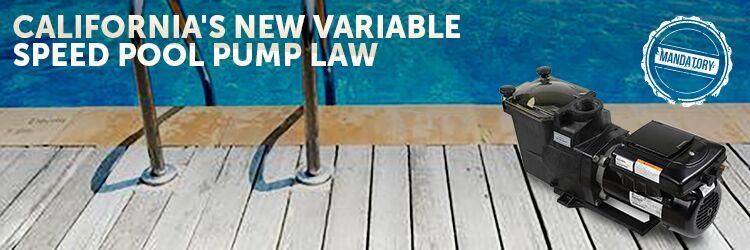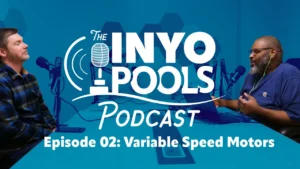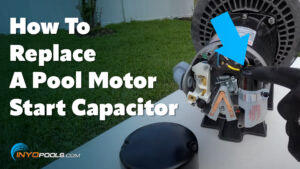Living in Florida, we view the state of California as a front-runner in energy efficiency. This is especially true in the pool industry. With Title 20, California set the industry standard for pool motor efficiency. It was the first successful attempt to regulate residential pool pump and motor combinations. However, make room for California’s new variable speed pool pump law. Although Title 20 has been around for over 10 years, new rules and regulations threaten the current status quo as we see today.
In this article, we will describe what Title 20 is and how the changes can affect pool owners in the United States.
The Whats and Whys of Title 20
Historically, operating pool equipment accounts for up to 20% of a household’s energy consumption. Now, imagine the number of pools in a large state like California. That is a lot of energy consumption. As a result, this significantly impacted California’s electrical grid. For this reason, California adopted a set of new standards for residential pool pumps.
Now, the California Energy Commission (CEC) requires you to use a dual, multiple, or variable speed motor. According to the CEC, implementing these standards can save you up to 80% of the electricity needed to circulate and filter your pool.
According to Section 1605.3(g)(5) of California’s Appliance Efficiency Regulation, California requires:
- Pump motors that are made after January 1, 2006, cannot be split-phase or have a capacitor start-induction run type
- Motors with a total horsepower greater than .75 must operate at two or more speeds
- The pump must operate with a control that is capable of running the pump at two speeds (minimum)
- The control’s default circulation speed setting cannot be more than one-half of the motor’s maximum rotation rate
- High-speed override capabilities cannot exceed one 24-hour cycle without resetting to the default settings
- Pressure cleaner booster pumps, commercial pool pumps and motor combinations, and auxiliary pumps are not regulated by Title 20.
** Title 20 Fact Sheet: California Appliance Efficiency Regulation**
California’s New Variable Speed Pool Pump Law
All in all, we wish we could say that the changes to Title 20 were sudden, however, they weren’t. Title 20 has been in effect for over ten years. Now, with 2019 approaching, we begin to see tighter regulations and stricter enforcement. By January 2019, the CEC intends to expand the existing scope of replacement pool pump motors and replacement motors.
Now, the new regulations align with the scope for federal dedicated-purpose pool pumps. They include:
- Tougher regulations on standards for single, dual, multi, and variable speed pump motors sold separately from the pump as replacements
- All replacement motors 5 HP or less
- Update testing procedures for manufacturers
- Power standard and label requirement for portable electric spas
How the Changes Affect Pool Owners in California
Although a lot of the changes affect manufacturers and retailers (like us), some of the changes also affect you as a pool owner. Beginning January 1st, pool owners are no longer able to purchase single- speed pumps or replacement motors. This is an attempt to transform the energy consumption in the state. Sure, this policy is already in effect, now agencies are enforcing it.
Before, it was easier to get around the pump mandate. In the event that a pool owner wanted a single-speed pump, they could simply order one online. In fact, we would sell you one. However, things are changing. Now, instead of targeting pool owners, agencies turned their attention to retailers and vendors like us.
As a result, we no longer will ship single speed pumps or replacement motors to pool owners in California. This also means that if you currently own a single speed motor, be prepared to replace it with a variable speed option.
What About Pool Owners Outside of California?
What about the pool owners outside of California, you ask? Well, you’re not out of the clear just yet.
If the Department of Energy has its way, beginning 2021, variable speed pool pumps will become mandatory for pool owners everywhere. Yes, you read that correctly- everywhere. Together, the Department of Energy, pool manufacturers, and utility companies finalized a federal regulation setting minimum efficiency standards for pool pumps.
This also closes the loopholes we currently see in states like California, who already have efficiency protocols in place. The 2021 regulation will supersede any state regulations in place and applies to both residential and commercial applications.
In short, variable speed pumps are slowly but surely becoming the law of the land. Sure, many things can happen before 2021, however, variable speed pumps aren’t going anywhere. Right now, it is the fastest-growing popular pump group on the market.
If you are on the market for a new pump or motor replacement and are unsure which ones qualify under Title 20, click HERE.
Are you for or against the new policies? Leave us a comment.













Leave a Reply